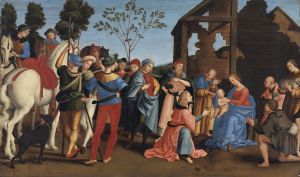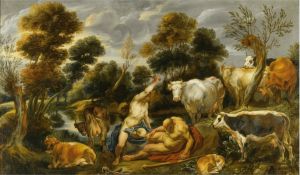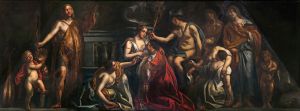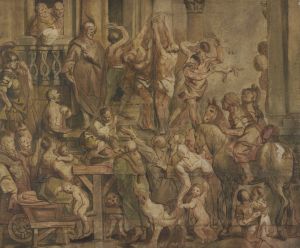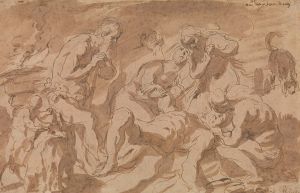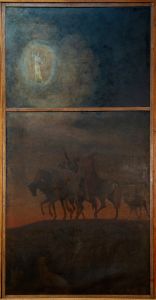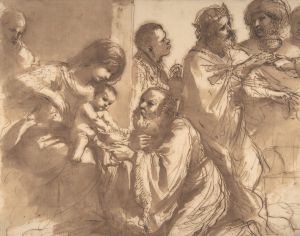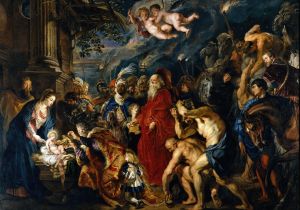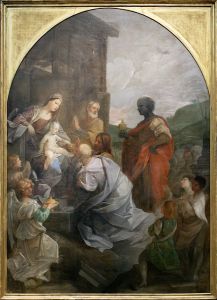
The Adoration of the Magi
A hand-painted replica of Jacob Jordaens’s masterpiece The Adoration of the Magi, meticulously crafted by professional artists to capture the true essence of the original. Each piece is created with museum-quality canvas and rare mineral pigments, carefully painted by experienced artists with delicate brushstrokes and rich, layered colors to perfectly recreate the texture of the original artwork. Unlike machine-printed reproductions, this hand-painted version brings the painting to life, infused with the artist’s emotions and skill in every stroke. Whether for personal collection or home decoration, it instantly elevates the artistic atmosphere of any space.
Jacob Jordaens' The Adoration of the Magi is a Baroque painting that depicts the biblical scene of the Three Wise Men presenting gifts to the infant Jesus, as described in the Gospel of Matthew (2:1–12). Jordaens, a prominent Flemish artist of the 17th century, was known for his dynamic compositions, vibrant use of color, and detailed depictions of figures, traits that are evident in this work.
The painting showcases Jordaens' mastery of dramatic lighting and expressive characterizations, hallmarks of the Baroque style. The scene is filled with a sense of movement and emotion, as the figures are arranged in a crowded yet harmonious composition. The Magi, dressed in elaborate and richly colored garments, are depicted in the act of offering their gifts of gold, frankincense, and myrrh to the Christ Child, who is held by the Virgin Mary. Surrounding them are a variety of figures, including Joseph and onlookers, whose expressions and gestures convey awe and reverence.
Jordaens often infused his works with a sense of realism, and this painting is no exception. The figures are rendered with meticulous attention to detail, from the textures of their clothing to the individuality of their faces. The artist's use of chiaroscuro—contrasting light and shadow—adds depth and drama to the scene, drawing the viewer's attention to the central figures of Mary, Jesus, and the Magi.
Unlike his contemporaries Peter Paul Rubens and Anthony van Dyck, Jordaens rarely traveled outside of his native Antwerp, and much of his work was created for local patrons. While he was influenced by Rubens, under whom he may have trained, Jordaens developed a distinctive style that emphasized robust, earthy figures and a lively, almost theatrical approach to storytelling.
The exact date of creation for The Adoration of the Magi by Jordaens is not definitively documented, but it is generally attributed to the mid-17th century, during the height of his career. The painting is housed in various collections, with multiple versions or interpretations of the subject attributed to Jordaens, a common practice among artists of the period.
This work exemplifies Jordaens' ability to combine religious themes with a vivid, humanistic approach, making it a significant example of Flemish Baroque art.





